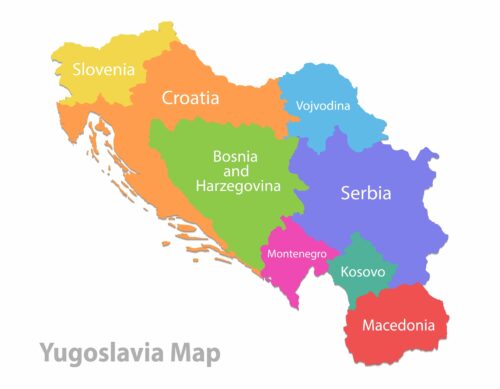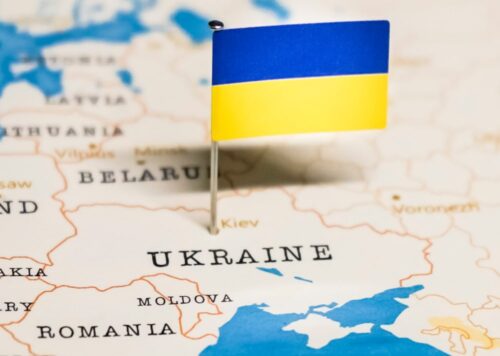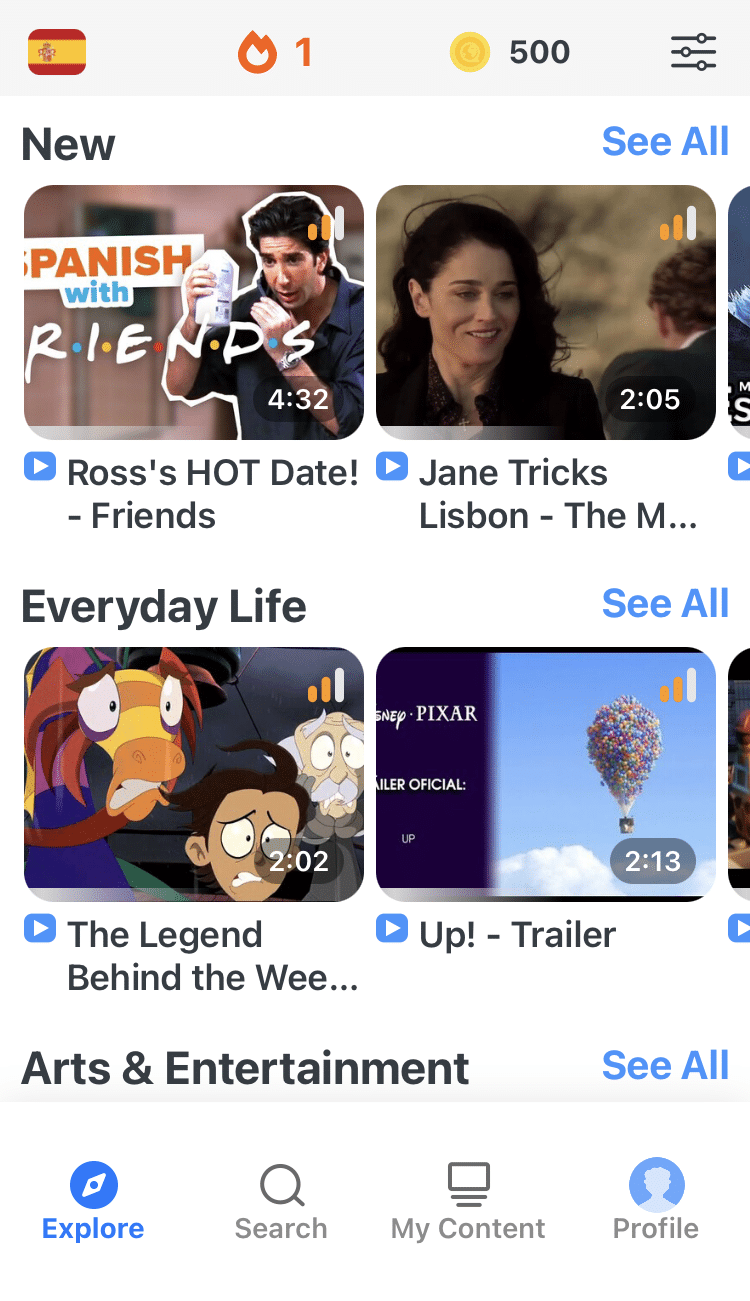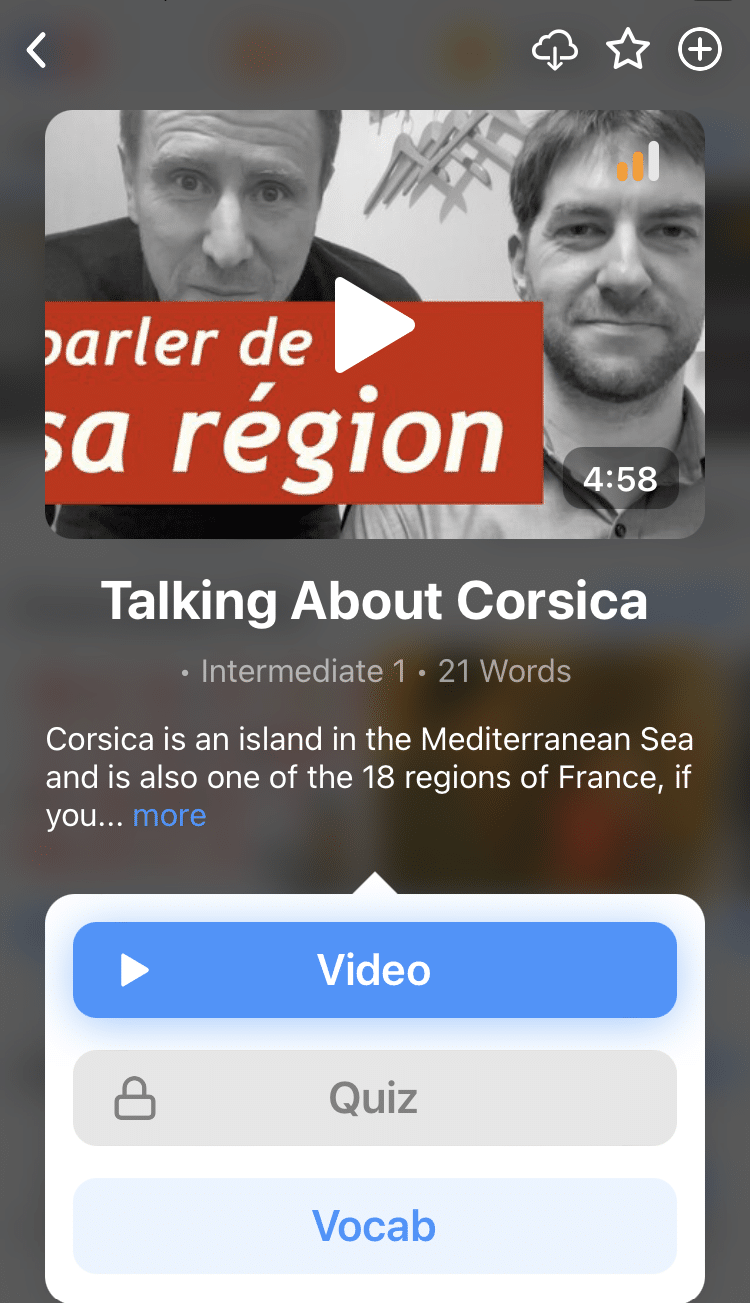
Which Slavic Language Should I Learn? How to Decide
Countries across Central and Eastern Europe have a lot in common. In fact, the Slavic language unites countries across the region under a banner of beautiful and unique sounds.
While Russian often takes the spotlight, the world of Slavic languages holds a treasure trove of options waiting to be uncovered.
Wondering what Slavic language should you learn? Here’s everything you need to know about the history of the Slavic languages, their family groups and how hard it is to learn so you can pick and start learning the Slavic language of your choice.
Contents
- Which Slavic Language Should I Learn?
- What Are The Slavic Languages?
- Common Slavic Languages
- Resources for Learning Slavic Languages
- And One More Thing...
Download: This blog post is available as a convenient and portable PDF that you can take anywhere. Click here to get a copy. (Download)
Which Slavic Language Should I Learn?
When considering which Slavic language to learn, it’s crucial to weigh the complexity of each language and your preferences. Polish is a relatively accessible choice, using the Latin alphabet, which can ease the learning process. Czech and Slovak also employ the Latin alphabet and are very similar, making them a manageable duo for the dedicated learner.
On the other hand, Slovene language might pose a challenge due to its diverse dialects and tricky grammar rules. The Serbo-Croatian language provides flexibility in terms of alphabet (Cyrillic or Latin) but comes with the complexity of a case system. Macedonian and Bulgarian, although mutually intelligible and lacking a case system, utilize the Cyrillic alphabet, which can be daunting for newcomers.
Belarusian and Ukrainian, while sharing some mutual intelligibility and using Cyrillic, offer access to unique cultural experiences.
Lastly, Russian, despite its complexity with Cyrillic, cases, and lengthy words, is rewarding due to its wide usage and rich literary heritage.
Ultimately, your decision should be based on your interests, linguistic goals, and the cultural experiences you wish to explore. So, let’s talk about the Slavic languages in more detail.
What Are The Slavic Languages?
Slavic languages are a group of related languages that emerged among the Slavs, an ethnic group whose origins are little known.
According to Ancient History Encyclopedia, the first noted records of the Slavs appeared in the sixth century. However, the group itself likely had far older origins.
The Slavic language is thought to stem from Proto-Slavic, which itself stems from Proto-Indo-European.
According to “The Origins of the Slavs: A Linguist’s View,” the initial split from Proto-Indo-European occurred around 3000 BC. From that point, Indo-European languages continued to evolve into separate distinct languages, including Proto-Slavic, the root language of all Slavic languages spoken today.
Encyclopedia Britannica reports that there are an estimated 315 million speakers of Slavic languages.
Slavic languages are spoken in Central Europe, the Balkans, most of Eastern Europe and large chunks of Northern Asia. There are also pockets of speakers of Slavic languages distributed in communities around the world.
Common Slavic Languages
The following list contains the most common Slavic languages alive today. This list is broken down into increasingly narrow family groups.
It’s important to note that the narrower the family group, the more similar the languages will be. In many cases, languages that are closely related may even be mutually intelligible, meaning speakers of one language can understand the other to some degree.
For instance, Macedonian and Bulgarian are both members of the Eastern group of the South Slavic branch, so they’re closely related. Since Serbo-Croatian and Slovene are in the Western group of the same South Slavic branch, they’re slightly more distantly related. Still more distantly related would be Russian, since it’s from a completely different branch of the Slavic language.
So why does all this matter? For language learners, it’s important to consider because it can help you learn multiple languages simultaneously. Pairing similar languages is a convenient way to learn more than one at once, and the more similar the languages are, the easier it’ll be to learn them simultaneously.
Here are some common Slavic languages you might consider learning.
West Slavic Languages
As the name would suggest, the West Slavic language family contains some of the westernmost Slavic languages.
Lechitic Family
Polish
While Polish isn’t the only member of the Lechitic group, it’s certainly the most well known. Ethnologue estimates that there are over 37 million speakers of Polish within Poland and over 3 million more speakers spread across the world.
Language learners might be especially interested in Polish because it’s one of the most widely spoken Slavic languages, but it still uses the Latin alphabet. That means it’s a little less daunting for English speakers than other popular Slavic languages like Russian and Ukrainian, which require learning a whole new alphabet.
There are, however, still many tricky aspects of the Polish language, including challenging pronunciations and a case system. But if you’re already looking to learn a Slavic language, these things probably do not intimidate you!
Czech-Slovak Family
Czech
According the Ethnologue, Czech is spoken by over 10 million people in the Czech Republic and nearly 3 million more around the world.
Czech is a popular choice with language learners because it uses the Latin alphabet and the Czech Republic is particularly popular with tourists. But, like other Slavic languages, if you’re not careful, you could fall victim to tricky pronunciations and the dreaded case system.
While Czech and Slovak vary in a number of ways, they do have enough mutual intelligibility to allow you to understand a fair amount of one by learning the other. Learning the two languages simultaneously should also be convenient.
Slovak
According to Ethnologue, Slovak is spoken by over 4.7 million people in Slovakia and more than 2 million more people around the world.
While it does have a case system and some tricky pronunciations, language learners will appreciate that Slovak uses the Latin alphabet and is so closely related to Czech.
South Slavic Languages
South Slavic languages are grouped in the southeastern corner of Europe, primarily in the Balkans.
Western Family
Slovene
According to Ethnologue, Slovene is spoken by over 1.9 million people in Slovenia and nearly 200,000 more around the world.
Also called “Slovenian,” Slovene is one of the newer Slavic languages, having been formed in the 1700s from a range of dialect groups. It’s still one of the most diverse Slavic languages, with a wide array of different dialects.
While they’re technically related, Slovene is not particularly mutually intelligible with Serbo-Croatian (covered below), except for a few dialects along the Slovenian border. There’s also some similarity between Slovene and West Slavic languages, though again, there isn’t a lot of mutual intelligibility.
Slovene uses the case system, has some difficult pronunciations and features some other tricky grammar rules.
For instance, while most European languages have singular and plural nouns, Slovene also features “dual grammatical number” to express when there are two of something. Additionally, the Huffington Post notes that the huge array of dialects can make it difficult for speakers of Slovene to understand one another.
For language learners, though, Slovene still has its appeal. It uses the Latin alphabet and the language’s uniqueness sets it apart.
Serbo-Croatian
Serbo-Croatian (sometimes abbreviated BCS) is a macro-language made up of Serbian, Montenegrin, Croatian and Bosnian, though Serbian and Montenegrin are often grouped together. While there are a few minor differences, these similar languages are mutually intelligible and the division between them is largely political.
According to Ethnologue, Serbo-Croatian is spoken by over 15 million people. Bosnian is spoken by over 1.1 million people in Bosnia and nearly 400,000 more around the world. Croatian is spoken by about 4.2 million people in Croatia and about 2.3 million more around the world. Serbian/Montenegrin is spoken by about 6.3 million people in Serbia and Montenegro and another 2.1 million around the world.
Montenegro split from Serbia in the 2000s, so this language is still developing standards.
One of the most notable differences between these languages is alphabet use. Serbian uses both the Cyrillic and Latin alphabets. Bosnian technically uses both alphabets, but it mostly uses the Latin alphabet. Croatian uses the Latin alphabet. As the Montenegrin language develops, there’s a preference for the Latin alphabet.
Language learners might face standard Slavic language challenges here, like the case system. However, language learners also benefit from being able to choose whether they prefer to use the Latin or Cyrillic alphabet. It’s very rare to be able to have options like this when learning a language!
Additionally, the region is popular with tourists, so some students might want to learn Serbo-Croatian to prepare for travels.
Eastern Family
Macedonian
According to Ethnologue, Macedonian is spoken by over 1.3 million people in Macedonia and over 2 million more around the world.
Macedonian and Bulgarian (covered below) are mutually intelligible. In fact, Macedonian has so much in common with Bulgarian that some Bulgarians actually consider it a dialect rather than a distinct language.
Macedonian has some of the same difficult pronunciations and uses Cyrillic; these aspects might challenge learners. However, unlike most other Slavic languages, Macedonian does not use a case system or infinitive forms of verbs, making it uniquely appealing to language learners.
Bulgarian
According to Ethnologue, there are over 7 million Bulgarian speakers in Bulgaria and 1 million more around the world.
Anyone wanting to learn Bulgarian will face some challenges, such as the use of the old Proto-Slavic verb system, in which verbs can also express whether there’s evidence. For instance, certain conjugations can indicate if something is unlikely or being retold.
While the verb conjugations are expressive, they can also be tricky. Additionally, Bulgarian uses the Cyrillic alphabet.
But language learners rejoice! Like Macedonian, Bulgarian does not use a case system or infinitive verbs.
East Slavic Languages
Belarusian
According to Ethnologue, Belarusian is spoken by over 2.2 million people in Belarus and another 300,000 around the world. However, this number may look confusing given that Belarus is home to over 9 million people. So why do so few Belarusians speak Belarusian?
That’s because most Belarusians actually speak Russian. In fact, the CIA World Factbook estimates that about 70 percent of the population speaks Russian.
Luckily, Belarusian is fairly mutually intelligible with Russian (and Ukrainian, for that matter), so the challenge of communicating in this country is less daunting than it may seem. It’s also partially mutually intelligible with Polish.
Belarusian uses Cyrillic and its grammar is quite similar to Russian. Due to the overlap between Belarusian, Russian and Ukrainian, language learners might like learning all three together.
Ukrainian
Despite historic attempts to suppress the Ukrainian language, Ukrainian remains one of the most widely spoken Slavic languages. Ethnologue estimates that Ukrainian is spoken by 32.6 million people in Ukraine and over 2 million more people around the world.
Ukrainian is most mutually intelligible with Belarusian but also has some mutual intelligibility with Russian. Polish has also heavily influenced the Ukrainian language, so there’s also some mutual intelligibility between these languages. At the very least, you’ll notice some overlapping vocabulary.
The Ukrainian language uses Cyrillic. Ukrainian learners will face challenges similar to those posed by other Slavic languages: a case system, tricky grammar rules and some difficult pronunciations. However, language learners should still consider learning Ukrainian because it’s widely spoken and many people consider it exceptionally beautiful.
Russian
According to Ethnologue, Russian is spoken by 138 million people in Russia and a total of nearly 268 million people worldwide. Russian is widely spoken throughout North Asia, Central Asia and Eastern Europe. In Europe, more people speak Russian as a native language than any other language.
Learning Russian isn’t without its challenges. After all, it uses the Cyrillic alphabet, employs a case system and features long and often tricky words.
However, there are still plenty of reasons to learn Russian.
Students flock to the Russian language because it’s the most widely spoken Slavic language by leaps and bounds. Additionally, anyone interested in literature should consider learning Russian, because Russian literature is some of the most acclaimed in the world.
Resources for Learning Slavic Languages
Before we explore the ins and outs of some exciting and popular Slavic languages, let’s get familiar with the diverse resources you can use for focused study.
- Transparent Language: Belarusian, Bulgarian, Czech, Macedonian, Polish, Russian, Slovak and Ukrainian. It also offers Serbo-Croatian as several separate languages: Bosnian, Croatian and Serbian. Since Transparent Language offers a flexible learning path, it’s adaptable to beginning or experienced students. You can follow Transparent Language’s designed learning path or start where you like. The wide array of activities offered in Transparent Language’s programs helps you build speaking, listening, reading and writing skills. Transparent Language even uses voice-enabled technology to help you perfect your pronunciation.
- MYLANGUAGES: Belarusian, Bulgarian, Czech, Macedonian, Polish, Russian, Slovak, Slovene and Ukrainian. It also offers Serbo-Croatian as Bosnian, Croatian, Montenegrin and Serbian. For a free resource, the options are remarkable. Lessons are available to teach you all the basics of the language, including the alphabet, grammar rules and key vocabulary. There are also additional resources, like reading excerpts, dictionaries and language learning games.
- Learn101: Belarusian, Bulgarian, Czech, Macedonian, Polish, Russian, Slovak, Slovene and Ukrainian. It also offers Serbo-Croatian as well as Bosnian, Croatian and Serbian. Learn101 is another free option with everything a beginning student could hope for. It offers alphabet lessons, basic grammar lessons, common vocabulary/phrases and even a test to check your learning. Plus, vocabulary lists also feature audio to help you nail down your listening and pronunciation.
- Live Lingua: Belarusian, Bulgarian, Macedonian, Polish, Russian (four different categories based on region) and Ukrainian. It also offers Serbo-Croatian and Serbian. While Live Lingua might be most known for its Skype lessons, it also offers a ton of free learning materials. Most of these courses target beginning-level students, teaching the alphabet, fundamental grammar rules and basic vocabulary.
- FluentU: Russian. FluentU offers a virtual immersion platform to help learn Russian the way it’s spoken by native speakers. It takes short videos made by and for native Russian speakers and sorts them by learning level, subject matter and format.
FluentU takes authentic videos—like music videos, movie trailers, news and inspiring talks—and turns them into personalized language learning lessons.
You can try FluentU for free for 2 weeks. Check out the website or download the iOS app or Android app.
P.S. Click here to take advantage of our current sale! (Expires at the end of this month.)

When it comes to Slavic languages, Russian is just the tip of the iceberg! Mix and match your favorite Slavic languages for a fun and well-rounded learning experience.
Download: This blog post is available as a convenient and portable PDF that you can take anywhere. Click here to get a copy. (Download)
And One More Thing...
If you dig the idea of learning on your own time from the comfort of your smart device with real-life authentic language content, you'll love using FluentU.
With FluentU, you'll learn real languages—as they're spoken by native speakers. FluentU has a wide variety of videos as you can see here:
FluentU has interactive captions that let you tap on any word to see an image, definition, audio and useful examples. Now native language content is within reach with interactive transcripts.
Didn't catch something? Go back and listen again. Missed a word? Hover your mouse over the subtitles to instantly view definitions.
You can learn all the vocabulary in any video with FluentU's "learn mode." Swipe left or right to see more examples for the word you’re learning.
And FluentU always keeps track of vocabulary that you’re learning. It gives you extra practice with difficult words—and reminds you when it’s time to review what you’ve learned. You get a truly personalized experience.
Start using the FluentU website on your computer or tablet or, better yet, download the FluentU app from the iTunes or Google Play store. Click here to take advantage of our current sale! (Expires at the end of this month.)








